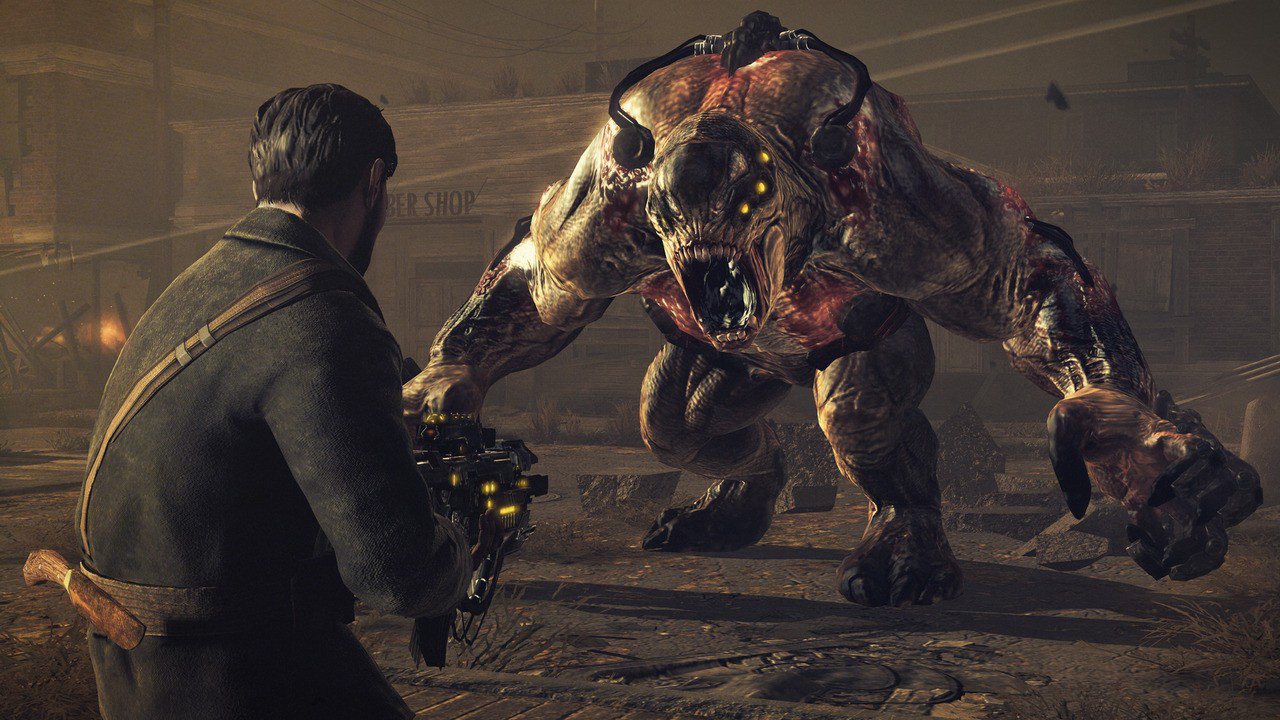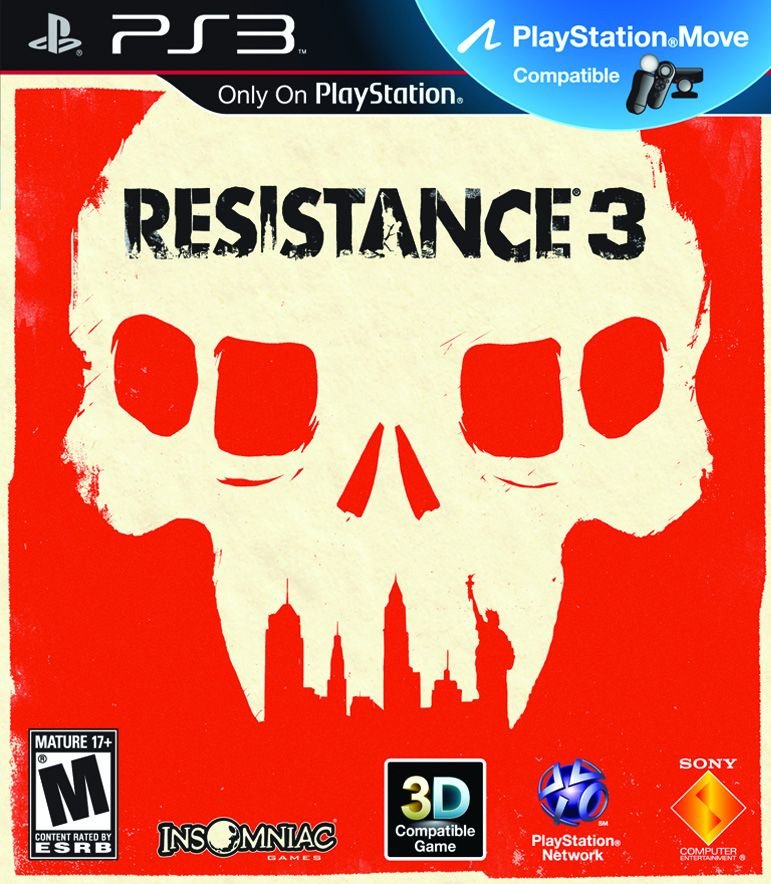It’s been a long, meandering road for Insomniac and their Resistance franchise. This is a series that has been with the PS3 since its launch, and has often been overshadowed by larger properties like Halo and Call of Duty. Over the years it has tried to be many things; a new killer app for the PS3, an alternate history shooter and an experiment in various contemporary shooter mechanics. But with the third title in the series, Resistance has finally found itself and its legs. It is now its own creature, an FPS that works as a multi-player experience and shines in its campaign. It finally knows what it is and plays to its strengths.
Last Minute Hero
It’s no spoiler at this point—especially considering how quickly they mention it at the beginning of Resistance 3—to talk about Nathan Hale being dead. The hero of Resistance and Resistance 2: Fall of Man was killed by his own companion when the Chimera virus in his system finally took over his body. Now that companion, Joe Capelli, is living like a fugitive along with the rest of America. The Chimera have won, and are systematically hunting down the few survivors left. When the scientist Dr. Malikov finds Joe and tells him a tower erected in New York city spells the end of the world, Joe undertakes the journey from the American Midwest to Manhattan to set things right once and for all. It’s a bleak, uncomfortable story that shows us a different world, where people are beyond caring about defeat, and are more concerned with just surviving to see tomorrow. The dialog and acting are functional, never really outstanding, but what sells the concept is the tone of despair and desperation.
On the visuals front, Insomniac continues its consistent record for no frills performance. This is not an amazing looking game when compared to other PS3 exclusives like Killzone or Uncharted, but what it lacks in bells and whistles, it makes up for with reliability. A solid framerate accompanies even the most hectic shootouts, and screen tearing is practically non-existent, which is impressive considering just how frantic combat can get in this game. When there are multiple enemies coming from all directions, using different weapons while you and other NPCs are filling the air with retaliation fire the engine is runs smoothly… and that’s no mean feat. The art direction also manages to convey the mood of the game, albeit without the jaw dropping impressiveness of something like God of War III. Light is played out to great affect, with autumnal oranges and yellows that contribute to an apocalyptic mood. Most of the environments are of the devastated sort, with ruined buildings and abandoned tunnels that manage to retain some character and look natural, avoiding the trap of being obviously designed as cover or a sniper nest.
The audio continues the same workman-like reliability as the graphics. A lot of the weapons retain a familiarity with the previous games so the Bullseye, for example, still sounds largely the way players remember. Because this is an FPS, you can expect an effective sound field in the middle of firefights, so owners of surround systems will be happy to know that their speakers will get a lot of directional audio. It’s not as heavy on the bass as some shooters, but takes advantage of the directionality very well. The music, created by Resistance 2 composer Boris Salchow, manages to move between the spectrum of melancholy and urgent, contributing once again to the idea that this is a world in the twilight of its days. A lot of classical composition with strings, horns and even choirs bolster the mood of the game without being intrusive.
Old Is New Again
One the reasons Resistance 3 manages to stand apart from other shooters is because it actually does differentiate itself other titles. That is to say, where most shooters now follow a Halo or Call of Duty-like template of recharging health, a limit of two weapons, and a tightly scripted experience calling for the right gun, appropriately given at the right time, to do the right job, Resistance 3 ignores all of these common characteristics. It’s a lateral step from Resistance 2, which caved into the Halo template and produced a competent but uneven experience. Resistance 3 on the other hand, embraces its strength—the unique weapons conceived by Insomniac—and cuts players loose in large, multi-level areas where it’s possible to snipe, run n’ gun, or even shoot through walls at unsuspecting enemies depending on the preferred shooting style of the player. Insomniac allows players to carry every weapon and—for the most part—use them at any time any way they see fit to fight their way out of their predicament. It creates an enormous playground of destruction, particularly in a co-op and other multi-player situations where the deviousness of players can produce some devastating results, such as drawing fire with a Bullseye to allow someone with an Augur—the gun that shoots through walls—to start taking out enemies from directly underneath the feet of the Chimera. The other change is the return to non-regenerating health, which brings back a tension to the combat that is surprising in its intensity. The pace of the frantic shooting is about the dynamic between conserving life and ammo when both are in short supply and it works.
The campaign is definitely the highlight of the game with accomplished pacing, and variety that never outstays its welcome. There will be times when the game runs players through corridors and it feels like a typical, scripted FPS experience that modern gamers are accustomed to, but then it opens up into a much more complex level layouts that encourage experimentation. This can dovetail into a pursuit through tunnels, or a vehicular section to switch things up. It seems that with Resistance 3, Insomniac finally got a grasp on maintaining tension and variety at just the right levels. This campaign is a considerable improvement from its predecessors.
Unfortunately, the multi-player is a less unanimous affair. On the one hand, it sports both online and local co-op, which is always a smart, welcome addition for an FPS. At the time of this writing, the online co-op was a little unreliable, with lag and other connection problems marring the experience, but the local co-op performed well. Regardless of which version you play, players can wander only so far away from each other, before the secondary partner is forcibly teleported (with a warning countdown) back in proximity of the host player. The competitive multi-player is as competent as ever, although it’s been scaled back considerably to a maximum of 16 players, rather than the 60 that Resistance 2 boasted. Bigger is not always better, and it seems like matches of 8 on 8 do generally go better than the chaos 30 on 30 from Resistance 2.
It’s here that Insomniac plays things a little more conservatively, with the levelling/perk system that was defined by Infinity Ward’s Call of Duty series. Players who stick with the multi-player will eventually get access to better weapons and other tactical advantages, and they can exercise their right to destruction in a variety of standard modes, including death-match, team death-match and Capture the Flag. And then there are “War Games” modes like “Chain Reaction” that takes the Call of Duty “Domination” mode of fighting for territory across a map, while “Breach” puts one team in charge of base defence while the other takes the assault role. These modes are competent and fun, though they provide little in the way of surprise.
Unfortunately, the biggest omission has to be the 8 player co-op mode that was a revelation in Resistance 2. The shifting objectives and dynamic enemy conditions made this co-op multi-player experience a real and welcome departure from traditional “horde modes” that had been defined by Gears of War and for Insomniac to abandon such a valuable concept is lamentable. It takes a multi-player component that could have been outstanding and renders it merely functional. That’s not to say that multi-player isn’t fun, just not that ambitious. It manages to distinguish itself largely by virtue—once again—of the wonderful weapons Insomniac has conceived and that’s where the variety and ingenuity of the multi-player will come from.
In the end, Resistance 3 manages to provide an entertaining—if slightly uneven—package with its startling single-player campaign as the highlight. Players looking to jump into multi-player will enjoy themselves but the pedestrian nature of the multi-player is likely to lose many gamers to the inevitable release of Modern Warfare 3 or even Battlefield 3. Less innovative multi-player aside, Resistance 3 offers a solid game that will appeal to shooter fans of both stripes, and manages strike a balance between an impressive campaign and competent multi-player experience that provides fun and adrenaline on both fronts. If you’re looking for an FPS on the PS3 to while away the weeks until the heavy hitters arrive, this is it.






